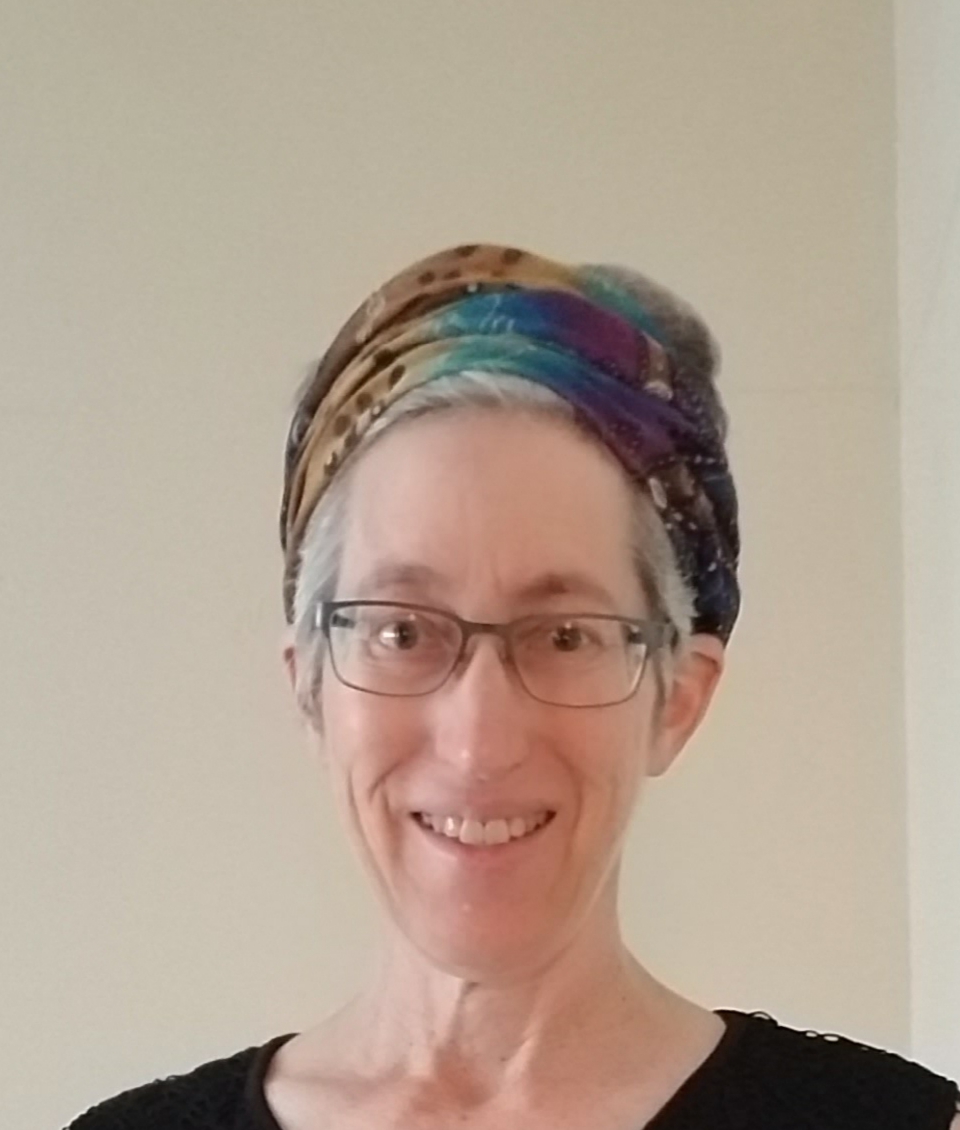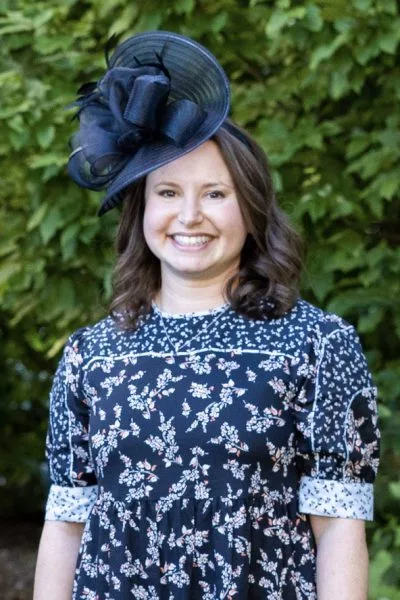If there are three houses next to each other situated in between two courtyards, how can one make an eruv? What if there were only two houses? If two courtyards have a window in between them, if the window is 4×4 handbreadths and within 10 handbreadths from the ground, we consider this an opening and then can make an eruv together. What if the window was a circle, what would be the circumference of a circle that would encompass a square of 4×4 inside of it? Rav Nachman said that the requirement that it be within ten of the ground would not be relevant in a house. What if there was a wall in between the two courtyards that was ten high and 4 wide? Does this prevent the courtyards from being able to make an eruv? What if the wall was breached? At what size is it significant?
Eruvin 76
Share this shiur:
Want to dedicate learning? Get started here:
New to Talmud?
Check out our resources designed to help you navigate a page of Talmud – and study at the pace, level and style that fits you.
The Hadran Women’s Tapestry
Meet the diverse women learning Gemara at Hadran and hear their stories.
Eruvin 76
זֶה נַעֲשֶׂה בֵּית שַׁעַר לָזֶה, וְזֶה נַעֲשֶׂה בֵּית שַׁעַר לָזֶה. אֶמְצָעִי הָוֵה לֵיהּ בַּיִת שֶׁמַּנִּיחִין בּוֹ עֵירוּב, וְאֵין צָרִיךְ לִיתֵּן אֶת הַפַּת.
this outer house becomes a gatehouse to this courtyard, and that outer house becomes a gatehouse to that courtyard, and therefore the residents of the outer houses need not contribute to the eiruv. The middle house between them is the house in which the eiruv is placed, and therefore its residents need not contribute bread for the eiruv.
בָּדֵיק לְהוּ רַחֲבָה לְרַבָּנַן: שְׁתֵּי חֲצֵרוֹת וּשְׁנֵי בָתִּים בֵּינֵיהֶם, זֶה בָּא דֶּרֶךְ זֶה וְנָתַן עֵירוּבוֹ בָּזֶה, וָזֶה בָּא דֶּרֶךְ זֶה וְנָתַן עֵירוּבוֹ בָּזֶה, קָנוּ עֵירוּב אוֹ לָא? מִי מְשַׁוֵּית לְהוּ לְגַבֵּי דְּהַאי בַּיִת, וּלְגַבֵּי דְּהַאי בֵּית שַׁעַר [וּלְגַבֵּי דְּהַאי בֵּית שַׁעַר, וּלְגַבֵּי דְּהַאי בַּיִת]?
The Sage Raḥava tested the other Sages: If there were two courtyards and two houses between them, and a resident of this courtyard came through this house that opens to his courtyard and placed his eiruv in that house farther from his courtyard, and a resident of this other courtyard came through this house that opens to his courtyard and placed his eiruv in that house that opens to the other courtyard, did they acquire the eiruv or not, i.e., are the two eiruvin valid? Do you render it a house with regard to this courtyard, whose eiruv was placed there, and a gatehouse with regard to that one who passed through it in order to place his eiruv in the other house? And similarly, do you render the other house a gatehouse with regard to this one and a house with regard to that one?
אֲמַרוּ לֵיהּ: שְׁנֵיהֶן לֹא קָנוּ עֵירוּב, מָה נַפְשָׁךְ: אִי בֵּית שַׁעַר מְשַׁוֵּית לֵיהּ, הַנּוֹתֵן אֶת עֵירוּבוֹ בְּבֵית שַׁעַר אַכְסַדְרָה וּמִרְפֶּסֶת — אֵינוֹ עֵירוּב. אִי בַּיִת מְשַׁוֵּית לֵיהּ — קָא מְטַלְטֵל לְבַיִת דְּלָא מְעָרֵב לֵיהּ.
The Sages said to Raḥava: Neither of them has acquired his eiruv. Whichever way you look at it, it is difficult: If you consider either house a gatehouse, the halakha with regard to one who places his eiruv in a gatehouse, a porch, or a balcony, is that it is not a valid eiruv. And if you consider either one a house, he would be carrying into a house for which he is not establishing an eiruv. Since the assumption that benefits one of them harms the other, and there is no way to establish firmly the status of these houses, the residents of both courtyards fail to acquire their eiruv.
וּמַאי שְׁנָא מִדְּרָבָא? דְּאָמַר רָבָא: אָמְרוּ לוֹ שְׁנַיִם צֵא וְעָרֵב עָלֵינוּ. לְאֶחָד עֵירַב עָלָיו מִבְּעוֹד יוֹם, וּלְאֶחָד עֵירַב עָלָיו בֵּין הַשְּׁמָשׁוֹת. זֶה שֶׁעֵירַב עָלָיו מִבְּעוֹד יוֹם נֶאֱכַל עֵירוּבוֹ בֵּין הַשְּׁמָשׁוֹת, וְזֶה שֶׁעֵירַב עָלָיו בֵּין הַשְּׁמָשׁוֹת נֶאֱכַל עֵירוּבוֹ מִשֶּׁתֶּחְשַׁךְ — שְׁנֵיהֶם קָנוּ עֵירוּב!
Raḥava asked: What makes this case different from the ruling of Rava? As Rava said: In the case of two people who said to one person: Go and establish an eiruv of Shabbat limits for each of us, and he established an eiruv for one of them while it was still day, and he established an eiruv for the other one during twilight, and the eiruv of the one for whom he established an eiruv while it was still day was eaten during twilight, and the eiruv of the one for whom he established an eiruv during twilight was eaten after nightfall, both of them have acquired their eiruv. Twilight is of doubtful status as to whether it is considered day or night. If it is night, any eiruv established at that time is invalid, and if it is day, any eiruv eaten at that time is invalid. Rava nonetheless ruled leniently, despite the fact that two contradictory assumptions are involved, in keeping with the principle that in cases of doubt relating to an eiruv, the halakha is lenient. Consequently, with regard to the one whose eiruv was eaten during twilight, it is considered as though it was already night, and therefore his eiruv had already taken effect while it was still day before it was eaten. Conversely, with regard to the one whose eiruv was established during twilight, that period of time is viewed as day, and therefore his eiruv is valid as well.
הָכִי הַשְׁתָּא?! הָתָם סָפֵק יְמָמָא סָפֵק לֵילְיָא לָא מִינַּכְרָא מִילְּתָא, אֲבָל הָכָא, אִי דִּלְגַבֵּי דְּהַאי בַּיִת, לְגַבֵּי דְּהַאי בַּיִת. אִי לְגַבֵּי דְּהַאי בֵּית שַׁעַר, לְגַבֵּי דְּהַאי נָמֵי בֵּית שַׁעַר.
The Sages respond: How can these cases be compared? There, where there is uncertainty whether it is day and uncertainty whether it is night, the matter is not noticeable, as no one sees exactly when each eiruv was established. But here, where the houses are clearly distinguishable, if with regard to this one, who placed his eiruv there, it is a house, then with regard to that one, who passed through it, it should also be regarded as a house. And if, with regard to this one, who passed through it, it is a gatehouse, then with regard to that one, who placed his eiruv there, it should also be considered a gatehouse. Therefore, neither of them acquires his eiruv.
הַדְרָן עֲלָךְ הַדָּר
מַתְנִי׳ חַלּוֹן שֶׁבֵּין שְׁתֵּי חֲצֵירוֹת אַרְבָּעָה עַל אַרְבָּעָה, בְּתוֹךְ עֲשָׂרָה — מְעָרְבִין שְׁנַיִם. וְאִם רָצוּ — מְעָרְבִין אֶחָד.
MISHNA: If there is a window in a wall that separates between two courtyards, and the window measures four by four handbreadths and is within ten handbreadths of the ground, the inhabitants of the courtyards establish two eiruvin, one for each courtyard. And if they desire, they may establish one eiruv, thereby merging the two courtyards, as they may be considered as one due to the window.
פָּחוֹת מֵאַרְבָּעָה עַל אַרְבָּעָה אוֹ לְמַעְלָה מֵעֲשָׂרָה מְעָרְבִין שְׁנַיִם, וְאֵין מְעָרְבִין אֶחָד.
However, if the window measures less than four by four handbreadths, or if it is above ten handbreadths from the ground, it is no longer considered a valid opening, and the two courtyards cannot be considered a single courtyard. Therefore, the residents establish two eiruvin, but they may not establish one eiruv.
גְּמָ׳ לֵימָא תְּנַן סְתָמָא כְּרַבָּן שִׁמְעוֹן בֶּן גַּמְלִיאֵל, דְּאָמַר: כׇּל פָּחוֹת מֵאַרְבָּעָה כְּלָבוּד דָּמֵי.
GEMARA: With regard to the mishna’s determination that the size of the window must be four by four handbreadths, the Gemara asks: Let us say that we learned an unattributed mishna in accordance with the previously cited opinion of Rabban Shimon ben Gamliel, who said: Any gap less than four handbreadths is considered lavud, i.e., two objects are considered connected if the space between them is less than four handbreadths. That would explain why the window must be four handbreadths in size, as otherwise it would be considered as though it were sealed, based on the principle of lavud.
אֲפִילּוּ תֵּימָא כְּרַבָּנַן, עַד כָּאן לָא פְּלִיגִי רַבָּנַן עֲלֵיהּ דְּרַבָּן שִׁמְעוֹן בֶּן גַּמְלִיאֵל אֶלָּא לְעִנְיַן לְבוּדִין, אֲבָל לְעִנְיַן פִּתְחָא אֲפִילּוּ רַבָּנַן מוֹדוּ דְּאִי אִיכָּא אַרְבָּעָה עַל אַרְבָּעָה — חֲשִׁיב, וְאִי לָא — לָא חֲשִׁיב.
The Gemara rejects this suggestion: Even if you say that the mishna is in accordance with the opinion of the Rabbis that only gaps of less than three handbreadths are included in the principle of lavud, the Rabbis disagreed with Rabban Shimon ben Gamliel only with regard to the halakhot of lavud, i.e., what is considered connected. But with regard to an opening, even the Rabbis agree that if there is an opening of four by four handbreadths, it is significant, and if not, it is not significant.
פָּחוֹת מֵאַרְבָּעָה וְכוּ׳. פְּשִׁיטָא, כֵּיוָן דְּאָמַר אַרְבָּעָה עַל אַרְבָּעָה בְּתוֹךְ עֲשָׂרָה — מִמֵּילָא אֲנָא יָדַעְנָא דְּפָחוֹת מֵאַרְבָּעָה וּלְמַעְלָה מֵעֲשָׂרָה לָא!
It was taught in the mishna: If the window is less than four by four handbreadths, or above ten handbreadths from the ground, the residents of each courtyard must establish a separate eiruv. The Gemara objects: This is obvious. Since the mishna stated in the previous clause that if the window is four by four handbreadths and within ten handbreadths from the ground, they establish one eiruv, from this halakha itself I know that if the window is less than four by four handbreadths or above ten handbreadths, they may not establish one eiruv. Why was it necessary to teach this in the mishna?
הָא קָא מַשְׁמַע לַן טַעְמָא דְּכוּלֵּיהּ לְמַעְלָה מֵעֲשָׂרָה, אֲבָל מִקְצָתוֹ בְּתוֹךְ עֲשָׂרָה — מְעָרְבִין שְׁנַיִם, וְאִם רָצוּ — מְעָרְבִין אֶחָד.
The Gemara answers: It teaches us this matter: The reason is specifically that the entire window is above ten handbreadths; however, if part of it is within ten handbreadths of the ground, they establish two eiruvin, and if they desire, they may establish one eiruv.
תְּנֵינָא לְהָא דְּתָנוּ רַבָּנַן: כּוּלּוֹ לְמַעְלָה מֵעֲשָׂרָה וּמִקְצָתוֹ בְּתוֹךְ עֲשָׂרָה, כּוּלּוֹ בְּתוֹךְ עֲשָׂרָה וּמִקְצָתוֹ לְמַעְלָה מֵעֲשָׂרָה — מְעָרְבִין שְׁנַיִם, וְאִם רָצוּ — מְעָרְבִין אֶחָד.
The Gemara comments: According to this explanation, we already learned in the mishna that which the Sages taught in a baraita: If nearly all of the window is above ten handbreadths and only a small part of it is within ten handbreadths, or if nearly all of it is within ten handbreadths and only a small part of it is above ten handbreadths, they establish two eiruvin, and if they desire, they may establish one eiruv.
הַשְׁתָּא כּוּלּוֹ לְמַעְלָה מֵעֲשָׂרָה וּמִקְצָתוֹ בְּתוֹךְ עֲשָׂרָה אָמְרַתְּ ״מְעָרְבִין שְׁנַיִם וְאִם רָצוּ מְעָרְבִין אֶחָד״, כּוּלּוֹ בְּתוֹךְ עֲשָׂרָה וּמִקְצָתוֹ לְמַעְלָה מֵעֲשָׂרָה מִיבַּעְיָא?
The essential meaning of this baraita is clear, but the Gemara raises a question with regard to its formulation: Now, if nearly all of it is above ten handbreadths and only a small part of it is within ten handbreadths, you said that they establish two eiruvin, and if they desire, they may establish one eiruv, i.e., the window has the status of an opening and therefore the two courtyards may establish a joint eiruv, then is it necessary to state the halakha governing the case where almost all of it is within ten and only a small part of it is above ten?
״זוֹ וְאֵין צָרִיךְ לוֹמַר זוֹ״ קָתָנֵי.
The Gemara answers that indeed, this baraita teaches employing the style: This, and it is unnecessary to say that, moving from the more difficult and novel case to the easier, more straightforward one.
אָמַר רַבִּי יוֹחָנָן: חַלּוֹן עָגוֹל צָרִיךְ שֶׁיְּהֵא בְּהֶיקֵּפוֹ עֶשְׂרִים וְאַרְבָּעָה טְפָחִים, וּשְׁנַיִם וּמַשֶּׁהוּ מֵהֶן בְּתוֹךְ עֲשָׂרָה, שֶׁאִם יְרַבְּעֶנּוּ, נִמְצָא מַשֶּׁהוּ בְּתוֹךְ עֲשָׂרָה.
Rabbi Yoḥanan said: A circular window must have a circumference of twenty-four handbreadths, with two and a bit of them within ten handbreadths of the ground, so that when he squares the window, i.e., if he forms the shape of a square inside it, it measures four by four handbreadths, and a bit of it is then within ten handbreadths of the ground.
מִכְּדִי, כֹּל שֶׁיֵּשׁ בְּהֶיקֵּפוֹ שְׁלֹשָׁה טְפָחִים — יֵשׁ בּוֹ בְּרוֹחְבּוֹ טֶפַח, בִּתְרֵיסַר סַגִּיא.
The Gemara poses a question with regard to this calculation: Now, since there is a general principle that any circle with a circumference of three handbreadths is one handbreadth in diameter, then according to this formula, a window with a circumference of twelve handbreadths, meaning that it has a diameter of four handbreadths, should be sufficient to create a window of four by four.
הָנֵי מִילֵּי בְּעִיגּוּלָא, אֲבָל בְּרִיבּוּעָא בָּעִינַן טְפֵי.
This measurement applies only to a circle and the ratio between its circumference and diameter, but with regard to a square that must fit entirely within that circle, we require a circle with a larger circumference. In order for a square of four by four handbreadths to be entirely contained within a circle, the circumference of the circle must measure more than twelve handbreadths
מִכְּדֵי, כַּמָּה מְרוּבָּע יָתֵר עַל הֶעָגוֹל — רְבִיעַ, בְּשִׁיתְסַר סַגִּיא!
The Gemara asks: Now, how much larger is a square than a circle? It is larger by one quarter. If so, a circle with a circumference of sixteen handbreadths at most should suffice.
הָנֵי מִילֵּי עִיגּוּלָא דְּנָפֵיק מִגּוֹ רִיבּוּעָא. אֲבָל רִיבּוּעָא דְּנָפֵיק מִגּוֹ עִיגּוּלָא, בָּעִינַן טְפֵי. מַאי טַעְמָא? מִשּׁוּם מוּרְשָׁא דְקַרְנָתָא.
The Gemara answers: This statement that a square is larger than a circle by a quarter applies only to a circle circumscribed by a square, but with regard to a square circumscribed by a circle, we require more, and the difference between the square and the circle is greater. What is the reason for this? It is due to the projection of the corners of the square, as the distance from the center of the square to its corners is greater than the distance from the center to its sides.
מִכְּדֵי, כׇּל אַמְּתָא בְּרִיבּוּעַ — אַמְּתָא וּתְרֵי חוּמְּשֵׁי בַּאֲלַכְסוֹנָא, בְּשֵׁיבְסַר נְכֵי חוּמְשָׁא סַגִּיא.
The Gemara further objects: Since every cubit in the side of a square is a cubit and two-fifths in the diagonal, a square of four by four handbreadths has a diagonal of five and three-fifths handbreadths. And since the diameter of a circle equals the diagonal of the square that it encompasses, the circle circumscribing a square of four by four handbreadths has a diameter of five and three-fifths handbreadths. If that measure is multiplied by three to arrive at the circumference of that circle, the result is that a circle with a circumference of seventeen handbreadths minus a fifth is sufficient to circumscribe a square of four by four handbreadths. Why, then, does Rabbi Yoḥanan say that a circular window must have a circumference of twenty-four handbreadths?
רַבִּי יוֹחָנָן אָמַר כִּי דַּיָּינֵי דְקֵיסָרִי, וְאָמְרִי לַהּ כְּרַבָּנַן דְקֵיסָרִי, דְּאָמְרִי: עִיגּוּלָא מִגּוֹ רִיבּוּעָא — רִיבְעָא, רִיבּוּעָא מִגּוֹ עִיגּוּלָא — פַּלְגָא.
The Gemara answers: Rabbi Yoḥanan spoke in accordance with the opinion of the judges of Caesarea, and some say in accordance with the opinion of the Sages of Caesarea, who say: A circle that is circumscribed within a square is smaller than it by one quarter; with regard to a square that is circumscribed within a circle, the difference between them is equal to half the square. According to this explanation, Rabbi Yoḥanan calculated as follows: Since a square of four by four handbreadths has a perimeter of sixteen handbreadths, the circumference of the circle that encompasses it must be fifty percent larger, or twenty-four handbreadths.
פָּחוֹת מֵאַרְבָּעָה עַל אַרְבָּעָה וְכוּ׳. אָמַר רַב נַחְמָן: לֹא שָׁנוּ אֶלָּא חַלּוֹן שֶׁבֵּין שְׁתֵּי חֲצֵירוֹת, אֲבָל חַלּוֹן שֶׁבֵּין שְׁנֵי בָתִּים אֲפִילּוּ לְמַעְלָה מֵעֲשָׂרָה נָמֵי, אִם רָצוּ לְעָרֵב — מְעָרְבִין אֶחָד. מַאי טַעְמָא? בֵּיתָא כְּמַאן דִּמְלֵי דָּמֵי.
It was taught in the mishna: If a window is less than four by four handbreadths, or if it is above ten handbreadths from the ground, the residents of the two courtyards may not establish one joint eiruv but must instead establish two independent ones. Rav Naḥman said: They taught this halakha of a window within ten handbreadths of the ground only with regard to a window between two courtyards. But with regard to a window between two houses, even if it is above ten handbreadths as well, if they wish to establish an eiruv, they establish one eiruv. What is the reason for this halakha? It is that a house is considered as though it were filled, and therefore there is no difference between below and above ten handbreadths with regard to a window in a house.
אֵיתִיבֵיהּ רָבָא לְרַב נַחְמָן: אֶחָד לִי חַלּוֹן שֶׁבֵּין שְׁתֵּי חֲצֵירוֹת, וְאֶחָד לִי חַלּוֹן שֶׁבֵּין שְׁנֵי בָתִּים, וְאֶחָד לִי חַלּוֹן שֶׁבֵּין שְׁתֵּי עֲלִיּוֹת, וְאֶחָד לִי חַלּוֹן שֶׁבֵּין שְׁנֵי גַגִּין, וְאֶחָד לִי חַלּוֹן שֶׁבֵּין שְׁנֵי חֲדָרִים — כּוּלָּן אַרְבָּעָה עַל אַרְבָּעָה בְּתוֹךְ עֲשָׂרָה!
Rava raised an objection to the opinion of Rav Naḥman from that which was taught in a baraita: A window between two courtyards, and a window between two houses, and a window between two attics, and a window between two roofs, and a window between two rooms are all one and the same to me; they all must be four by four handbreadths and within ten handbreadths from the ground. This directly contradicts Rav Naḥman’s opinion.
תַּרְגּוּמָא אַחֲצֵירוֹת. וְהָא ״אֶחָד לִי״ קָתָנֵי! תַּרְגּוּמָא אַאַרְבָּעָה עַל אַרְבָּעָה.
The Gemara answers: Explain that this halakha of ten handbreadths mentioned in the baraita is referring only to courtyards. The Gemara objects: Doesn’t the baraita teach: Are all one and the same to me, indicating that they are all equal in this regard? Rather, explain that they are all equal in that the window must be the size of four by four handbreadths, but not that all must be within ten handbreadths of the ground.
בְּעָא מִינֵּיהּ רַבִּי אַבָּא מֵרַב נַחְמָן: לוּל הַפָּתוּחַ מִן בַּיִת לַעֲלִיָּיה, צָרִיךְ סוּלָּם קָבוּעַ לְהַתִּירוֹ אוֹ אֵין צָרִיךְ סוּלָּם קָבוּעַ לְהַתִּירוֹ?
Rabbi Abba raised a dilemma before Rav Naḥman: With regard to an aperture that opens from the ceiling of a house occupied by one person to an attic occupied by another, must a permanent ladder be positioned in the opening to render carrying from one level to the other permitted by turning the two into a single residence? Or, is a permanent ladder not necessary to render it permitted?
כִּי אָמְרִינַן בֵּיתָא כְּמַאן דִּמְלֵי דָּמֵי — הָנֵי מִילֵּי מִן הַצַּד, אֲבָל בָּאֶמְצַע — לָא, אוֹ דִילְמָא לָא שְׁנָא?
The Gemara clarifies the two sides of the question: When we say that a house is considered as though it were filled, does this apply only to a window positioned on the side, but not to a window in the middle? In that case, the opening would not be viewed as near the full part of the house, and a permanent ladder would be required. Or perhaps there is no difference, and since the house is considered filled, no ladder is necessary.
אֲמַר לֵיהּ: אֵינוֹ צָרִיךְ. סְבוּר מִינָּה: סוּלָּם קָבוּעַ הוּא דְּאֵינוֹ צָרִיךְ, הָא סוּלָּם עֲרַאי — צָרִיךְ. אִיתְּמַר, אָמַר רַב יוֹסֵף בַּר מִנְיוֹמֵי אָמַר רַב נַחְמָן: אֶחָד סוּלָּם קָבוּעַ וְאֶחָד סוּלָּם עֲרַאי — אֵינוֹ צָרִיךְ.
Rav Naḥman said to him: It is not necessary. The Sages understood from this response that he meant that a permanent ladder is not required, but a temporary ladder is required. However, it is stated in this regard: Rav Yosef bar Manyumi said that Rav Naḥman said: Neither a permanent ladder nor a temporary ladder is required, as the fact that the opening is located within the house is sufficient to render it permitted to carry from the house to the attic.
מַתְנִי׳ כּוֹתֶל שֶׁבֵּין שְׁתֵּי חֲצֵירוֹת, גָּבוֹהַּ עֲשָׂרָה וְרוֹחַב אַרְבָּעָה — מְעָרְבִין שְׁנַיִם, וְאֵין מְעָרְבִין אֶחָד.
MISHNA: If a wall between two courtyards is ten handbreadths high and four handbreadths wide, the residents of the courtyard establish two eiruvin, a separate one for each courtyard, but they may not establish one eiruv.
הָיוּ בְּרֹאשׁוֹ פֵּירוֹת — אֵלּוּ עוֹלִין מִכָּאן וְאוֹכְלִין, וְאֵלּוּ עוֹלִין מִכָּאן וְאוֹכְלִין, וּבִלְבַד שֶׁלֹּא יוֹרִידוּ לְמַטָּן.
If there was produce on top of the wall, these residents of one courtyard may ascend from this side and eat from it, and those residents of the other courtyard may ascend from that side and eat from it, provided that they do not lower the produce down from on top of the wall to one of the courtyards.
נִפְרְצָה הַכּוֹתֶל, עַד עֶשֶׂר אַמּוֹת — מְעָרְבִין שְׁנַיִם, וְאִם רָצוּ מְעָרְבִין אֶחָד, מִפְּנֵי שֶׁהוּא כְּפֶתַח. יוֹתֵר מִכָּאן — מְעָרְבִין אֶחָד וְאֵין מְעָרְבִין שְׁנַיִם.
If the wall was breached, the following distinction applies: If the breach was up to ten cubits wide, they establish two eiruvin, and if they desire, they may establish one eiruv, as it is similar to an entrance, like any opening less than ten cubits wide. If the breach was more than this, they establish one eiruv, and they may not establish two, as a breach of this size nullifies the partition and joins the two courtyards into a single domain.
גְּמָ׳ אֵין בּוֹ אַרְבָּעָה מַאי? אָמַר רַב: אֲוִיר שְׁתֵּי רְשׁוּיוֹת שׁוֹלֶטֶת בּוֹ, לֹא יָזִיז בּוֹ אֲפִילּוּ מְלֹא נִימָא.
GEMARA: The Gemara asks: If this wall is not four handbreadths in width, what is the halakha? Rav said: In this case, the air of two domains controls it. Since the wall is not broad enough to be regarded a domain of its own, the top of the wall is seen as belonging to both courtyards and is then prohibited to both of them. Accordingly, one may not move anything on top of the wall, even as much as a hair’s breadth.






















